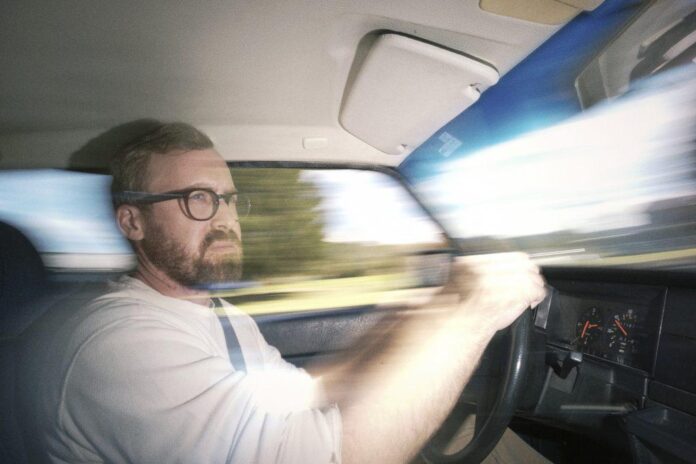“How to Find a Public Restroom,” the first episode of the third and final season of HBO’s , premiered last Friday, ostensibly serving as a primer for New Yorkers in search for a place to relieve themselves.
But, as has become host and filmmaker John Wilson’s signature, it was also so much more than that, the videographer’s inventive storytelling spinning out in unexpected directions from his stated thesis.
Each episode pairs Wilson’s personal archive footage of both the strange and the mundane, shot across the city, with his quirky narration, teasing out unexpected connections and visual puns.
The end is always somehow a cohesive narrative that leaves the viewer wondering how, exactly, we got from point A to point B.

One of New York City’s five high-tech self-cleaning bathroom in . Photo courtesy of HBO.
For example, after successfully hitching a ride on a bathroom-equipped party bus heading to a concert in Forest Hills, Wilson was emboldened to ask a woman driving her RV to Burning Man—the annual art- and music-filled gathering in Nevada’s remote and dusty Black Rock Desert—if he can tag along. (Somewhat shockingly, she agreed.)
In his search for a public restroom, Wilson also eventually found himself at the , the oft-mocked 150-foot-tall Thomas Heatherwick staircase sculpture at Manhattan’s very corporate Hudson Yards.
In some ways, this luxury real estate development might seem like the antithesis of Burning Man, a temporary city ostensibly built on counter-cultural principles such as decommodification and radical inclusion.
Unexpectedly, what they have in common is that neither one was too keen to have Wilson film onsite.

The poster for season three of . Image courtesy of HBO.
After winding his way through the labyrinthine halls of Hudson Yards to get to the toilet, Wilson came across the , which he described as “shiny staircase to nowhere that you have to pay to climb,” noting that it’s been closed due to a spate of suicidal jumpers. (When it was open, entrance to the sculpture was actually free with timed reservations.)
Soon, however, Wilson attracted the attention of the police, who tried to demand his name and threatened to arrest him for trespassing if he ever returns. He assured them that “this place was already inhospitable enough, and I’ll never return.”
“It was fascist. Hudson Yards is a very hostile space for, uh, documentarians,” Wilson told the . “It’s also where HBO is based.”
The Burning Man authorities appear to have been less confrontational, only informing Wilson after his week in the desert that he didn’t have permission to use any of his footage from the event. A different documentary crew, from the same team of former NXIVM cult members that made the series , had secured exclusive documentary rights for that year’s gathering.
(This was not Wilson’s first run-in with NXIVM. In a season two, a digression in the episode “How to Appreciate Wine” recalled how he attended a college a capella summit run by NXIVM founder Keith Raniere. Something about the event didn’t pass the smell test, and Wilson ended up researching the so-called multilevel marketing company and disrupting the event by publicly detailing accusations that it was a cult that had driven multiple members to suicide.)
The episode reveals Wilson’s frustration with this roadblock, which he said left him “creatively constipated.” But he remained undaunted, rebuilding his narrative around the footage’s absence.
“It ended up thematically working well with this idea of gatekeeping, private space, and artistic expression and stuff like that,” Wilson told the. “I think it ended up making the episode stronger in a weird way.”
It’s unclear what Wilson’s take on Burning Man is, but he’s plainly not a fan of Hudson Yards.
“I’m not the only person that has noticed how kind of hostile it can be,” Wilson told Polygon. “I really hope that that is not a model that people continue to look towards… the campus around the , it just sanitizes everything in a way that I feel is antithetical to the way a healthy city should operate.”
The documentarian did manage to have the last word with the real estate development, breaking his promise and returning with his own take on the multi-tiered structure. Only Wilson’s is made from plastic bottles filled from pee, ostensibly collected from the city streets where they’ve been discarded by taxi cab drivers unable to access a public bathroom. It’s a satisfying end to the season premiere, coming full circle, both thematically and physically.

























